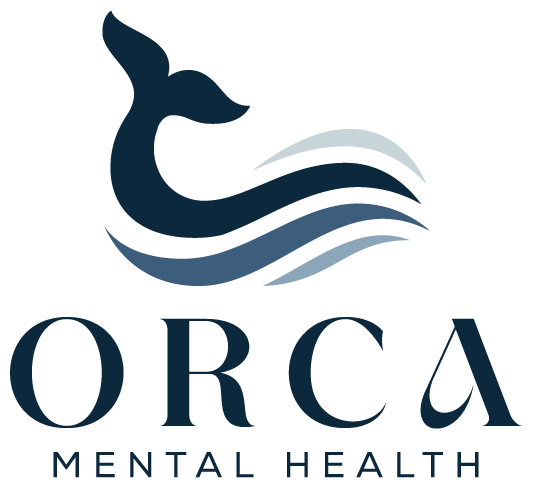Seasonal Depression Quiz
- Home
- What We Treat
- Seasonal Depression
- Get Help Today
Do I Have Seasonal Depression?
Seasonal Affective Disorder (SAD), often known as seasonal depression, is a recurring depressive disorder that typically manifests during the colder, darker months of the year. Around 5% of the U.S. Population suffers with SAD. This condition significantly impacts daily functioning, mood, and overall well-being.
What is Seasonal Affective Disorder (SAD)?
Seasonal Affective Disorder (SAD) is a type of depression that emerges seasonally, primarily during the fall and winter months when natural sunlight is diminished. It is recognized as a major depressive disorder with a seasonal pattern, which can significantly impact the daily lives of those affected. Unlike other forms of depression, the onset of SAD coincides with specific seasonal changes, primarily related to the reduced exposure to sunlight that comes with shorter days and longer nights.
The disorder is thought to be triggered by the disruption in the body’s internal clock or circadian rhythms, a key regulator of the sleep-wake cycle. Sunlight plays a critical role in resetting the body’s daily rhythms, and the lack of sunlight during winter can lead to misalignment and disruption of biological processes. Additionally, the reduction in sunlight can cause a drop in serotonin levels, a neurotransmitter that regulates mood, appetite, and sleep, contributing further to depressive symptoms. Moreover, the change in seasons can disrupt the balance of melatonin, a hormone that plays a role in sleep patterns and mood.
- Learn More
How Seasonal Depression Varies from Regular Depression
While the symptoms of seasonal depression are similar to those of non-seasonal depression, the key differentiator is the timing of the onset. Seasonal depression is directly tied to specific times of the year, typically beginning in late fall and early winter and remitting during the spring and summer months. This pattern of depression is crucial for diagnosis and distinguishes SAD from other forms of depression, where symptoms might not follow a temporal pattern.
Furthermore, the specific symptoms related to changes in sleep and eating patterns are more pronounced in SAD than in non-seasonal depression. The craving for carbohydrates and increased sleep are physiologically linked to the body’s response to shorter daylight hours and colder temperatures, reflecting the seasonal nature of this disorder.
Recognizing these signs and understanding how they manifest uniquely in SAD can guide individuals and their families to seek appropriate treatment early.
- Understand more
Seasonal Affective Disorder in Winter vs. Summer
Winter SAD is the more recognized form of seasonal depression, linked primarily to the reduced level of sunlight during the late autumn and winter months when days are shorter. The lack of sunlight can disrupt the body’s internal clock or circadian rhythm, decrease the production of serotonin—a neurotransmitter that regulates mood—and affect melatonin levels, which impact sleep patterns and mood.
Symptoms of winter SAD often include:
- Increased sleep and daytime drowsiness: Individuals may experience hypersomnia, finding it difficult to stay awake during the day or requiring much longer hours of sleep than usual.
- Overeating and weight gain: There is often a marked increase in appetite, particularly for carbohydrates and sugary foods, which can lead to weight gain.
- Fatigue and decreased energy levels: Even when getting more sleep, individuals may feel tired most of the time.
- Social withdrawal: Often referred to as the “winter hibernation,” this symptom involves a desire to avoid social interactions and a tendency to isolate oneself.
- Depressed mood: Persistent feelings of sadness, hopelessness, and irritability are common.
- Difficulty concentrating: Many individuals report a decrease in their cognitive abilities during the winter months, affecting their work and personal lives.
Contrary to the winter variant, summer SAD occurs during the late spring and summer months and is less common. Researchers believe that longer days and increased heat and humidity might play a role in disrupting the individual’s circadian rhythm in the opposite way of winter SAD. This form of SAD is thought to be triggered by longer daylight hours and possibly the disruption of schedules during summer.
Symptoms of summer SAD can include:
- Trouble sleeping (insomnia): Opposite to winter SAD, individuals with summer SAD may find it difficult to sleep and may suffer from chronic sleep disturbances.
- Decreased appetite and weight loss: There is often a lack of appetite, which can lead to weight loss, unlike the winter version which leads to weight gain.
- Increased irritability and anxiety: The symptoms tend to be more agitated than those experienced in winter SAD, with an increase in anxiety levels.
- Agitation or restlessness: Along with irritability, individuals may feel more restless and have a tolerance level that is lower than usual.
- Episodes of violent behavior: In extreme cases, irritability and agitation can escalate to violent behavior.
- ORCA Mental Health
Let Us Guide You To Wellness
Taking the first step toward managing seasonal depression is crucial. At ORCA Mental Health, we understand the challenges that come with SAD and are here to provide support and effective treatment options.
Dedicated to providing comprehensive, individualized care
- Get Help Now
The Impact of Seasonal Depression on Men
- How to Heal
Lifestyle Adjustments to Combat SAD
Culturally, men are often expected to be the stoic providers, a role that leaves little room for admitting struggles with mental health. This stigma can prevent men from seeking help, leading to a worsening of symptoms and a deeper entrenchment of anxiety. ORCA Mental Health is dedicated to breaking down these barriers by promoting mental health awareness and providing a safe space for men to learn and practice new coping strategies. Our programs are designed to address men’s specific mental health needs, helping them navigate their way out of the isolation that anxiety often creates.
Light therapy is one of the most effective lifestyle interventions for SAD, particularly for those suffering from the winter variant. It involves the use of a light box that emits a bright light mimicking natural sunlight. This exposure to bright light can help regulate the body’s circadian rhythms, improve mood, and increase energy levels. The therapy typically involves sitting a few feet from the light box for about 20 to 30 minutes each day, usually in the morning, which can help combat the melatonin overproduction that tends to occur during the darker months.
Nutritional adjustments are key in managing and possibly preventing the onset of SAD symptoms. A diet rich in omega-3 fatty acids, found in fish such as salmon and mackerel, can support brain health and reduce depressive symptoms. Additionally, increasing intake of fruits, vegetables, and whole grains can boost overall health and help stabilize mood. It’s also beneficial to minimize the intake of refined sugars and high-carbohydrate foods, which can lead to fluctuations in blood sugar levels, potentially exacerbating mood swings and energy dips.
Regular exercise is another powerful tool against SAD. Physical activity not only promotes the release of endorphins, known as feel-good hormones, but also helps regulate the release of stress hormones, such as cortisol. Even moderate activities like walking, yoga, or swimming for 30 minutes a day can significantly elevate mood and energy levels. Outdoor exercise can be particularly beneficial for those with winter SAD, as it combines physical activity with exposure to natural light, even when it’s cloudy.
Establishing a consistent daily routine can help strengthen the body’s sleep-wake cycle and improve overall mental health. This includes waking up, eating, exercising, and going to bed at the same times every day. Consistency can counteract the body’s impulses to shift into a less helpful sleep schedule and can also help in managing stress, which is often an exacerbator of depressive symptoms.
- The Importance of Getting Help
Professional Treatments Available at ORCA Mental Health
At ORCA Mental Health, we recognize that each individual’s experience with Seasonal Affective Disorder (SAD) is unique, and thus, a variety of tailored professional treatments are essential for effective management and recovery.
One of the most effective forms of therapy for SAD is Cognitive Behavioral Therapy specifically adapted for SAD (CBT-SAD). This therapy focuses on identifying negative thought and behavior patterns and changing them. It helps individuals to challenge and modify the negative thoughts that contribute to their depressive state, replacing them with more positive and realistic ones.
Traditional psychotherapy offers a space for patients to discuss their feelings and thoughts with a professional, which can be particularly useful for addressing the emotional and psychological aspects of SAD. It helps patients understand and cope with their feelings, and develop strategies to manage their symptoms effectively.
For some individuals, medication may be necessary to manage their SAD symptoms effectively. Antidepressants, particularly selective serotonin reuptake inhibitors (SSRIs), are commonly prescribed to help increase serotonin levels in the brain, which can improve mood, appetite, and sleep patterns.
Given that reduced sunlight during winter months can lead to decreased levels of Vitamin D—which plays a crucial role in serotonin activity—Vitamin D supplements may be recommended as part of the treatment plan for SAD. Studies suggest that increasing Vitamin D levels can help improve the mood of individuals suffering from this form of depression.
- What We Offer
Take the First Step Toward Better Mental Health
Taking the first step toward managing seasonal depression is crucial. At ORCA Mental Health, we understand the challenges that come with SAD and are here to provide support and effective treatment options. If you or a loved one is struggling with the symptoms of seasonal depression, get in touch with ORCA Mental Health. Our team is dedicated to providing individuals with the tools and support they need to overcome the challenges of Seasonal Affective Disorder.
- Get Help With Costs
We Accept Most Major Insurances
Contact our team or fill out our online form to verify your insurance coverage.








- Get Started
Take the First Step Toward Recovery
At ORCA Mental Health, we believe in a holistic and individualized approach to mental health care. We recognize that every journey is unique, and our programs are tailored to the specific needs of each client.
- Our clients receive the most effective and relevant treatment
- We work collaboratively to provide the highest standard of care
- Our Community fosters long-term recovery and personal growth

